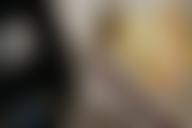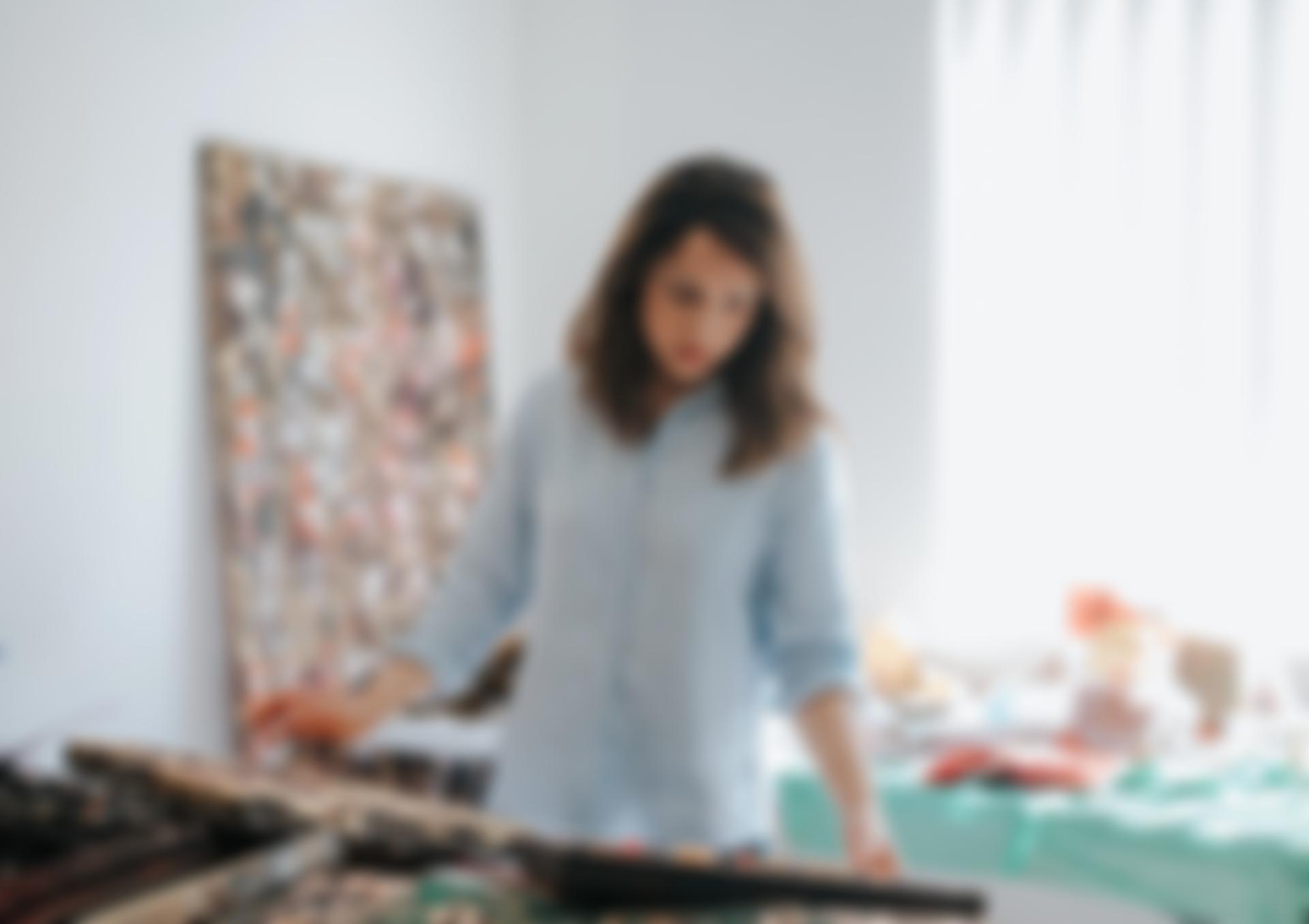
In the studio with kirtika kain
I'm Kirtika Kain, and this is my studio in Sydney. It's a place I have spent a lot of time in during 2021, as it's also where I live.
The works for the show, The Lunar Line, were made within these walls in a very intense period of isolation. I was speaking to my family in India and hearing of loss and the unfolding impact of COVID at home and abroad. The works felt volcanic, an eruption of my inner life in a time of change and in a space of silence.
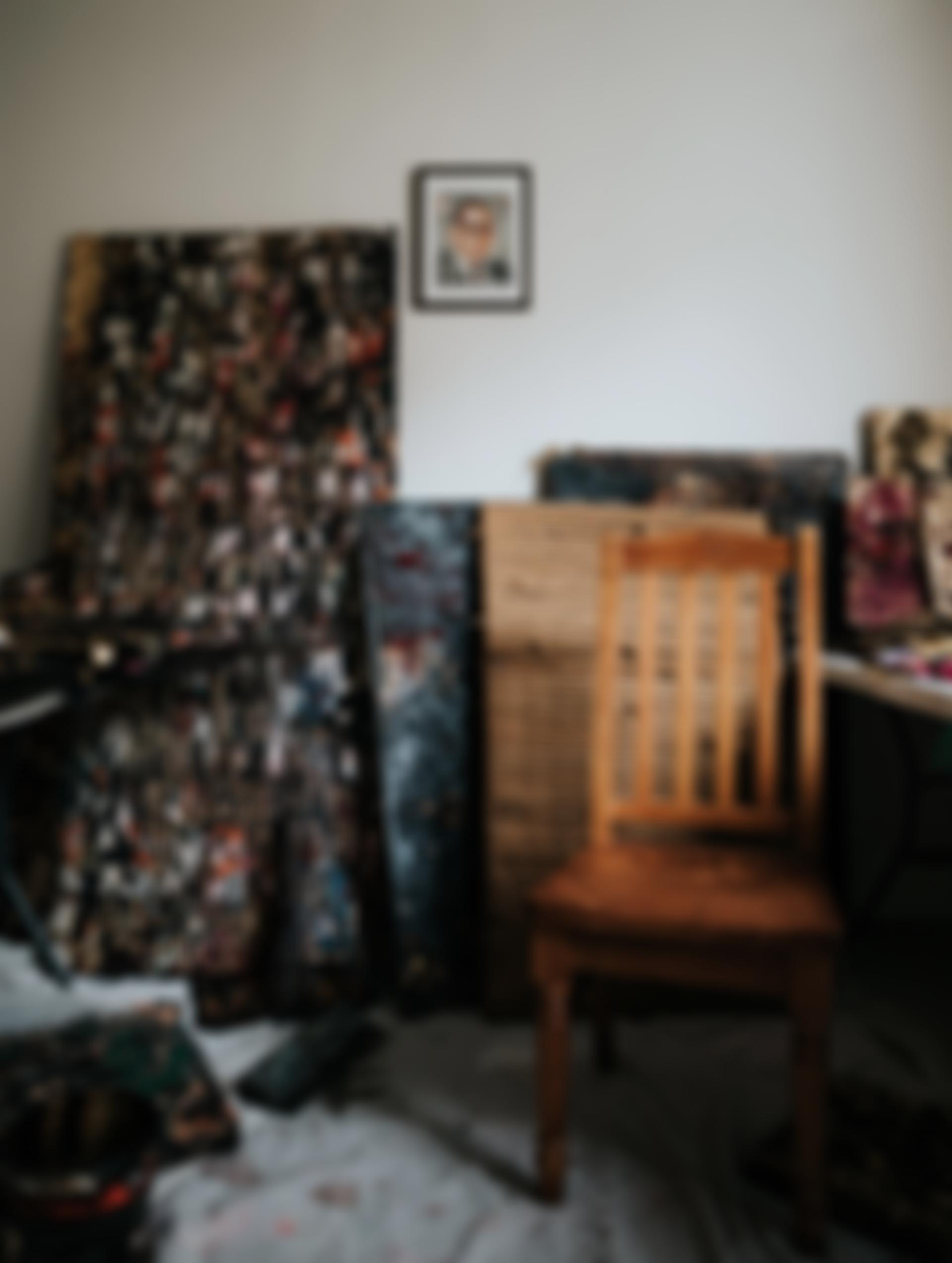
My art practice is an embodied exploration of my caste identity. I was born in New Delhi into the Dalit caste and was raised in Sydney. I am interested in understanding my familial and personal inheritance of caste. Where is caste written in me and does it define who I am?
The complexities and historical weight of these questions are suspended in the air of the studio. The physical process of making art is a way of working through and grounding these questions in my body and its inherited memory.
Although caste is an ancient system, the studio is where I can create the new and unseen, and enjoy this unfolding process.
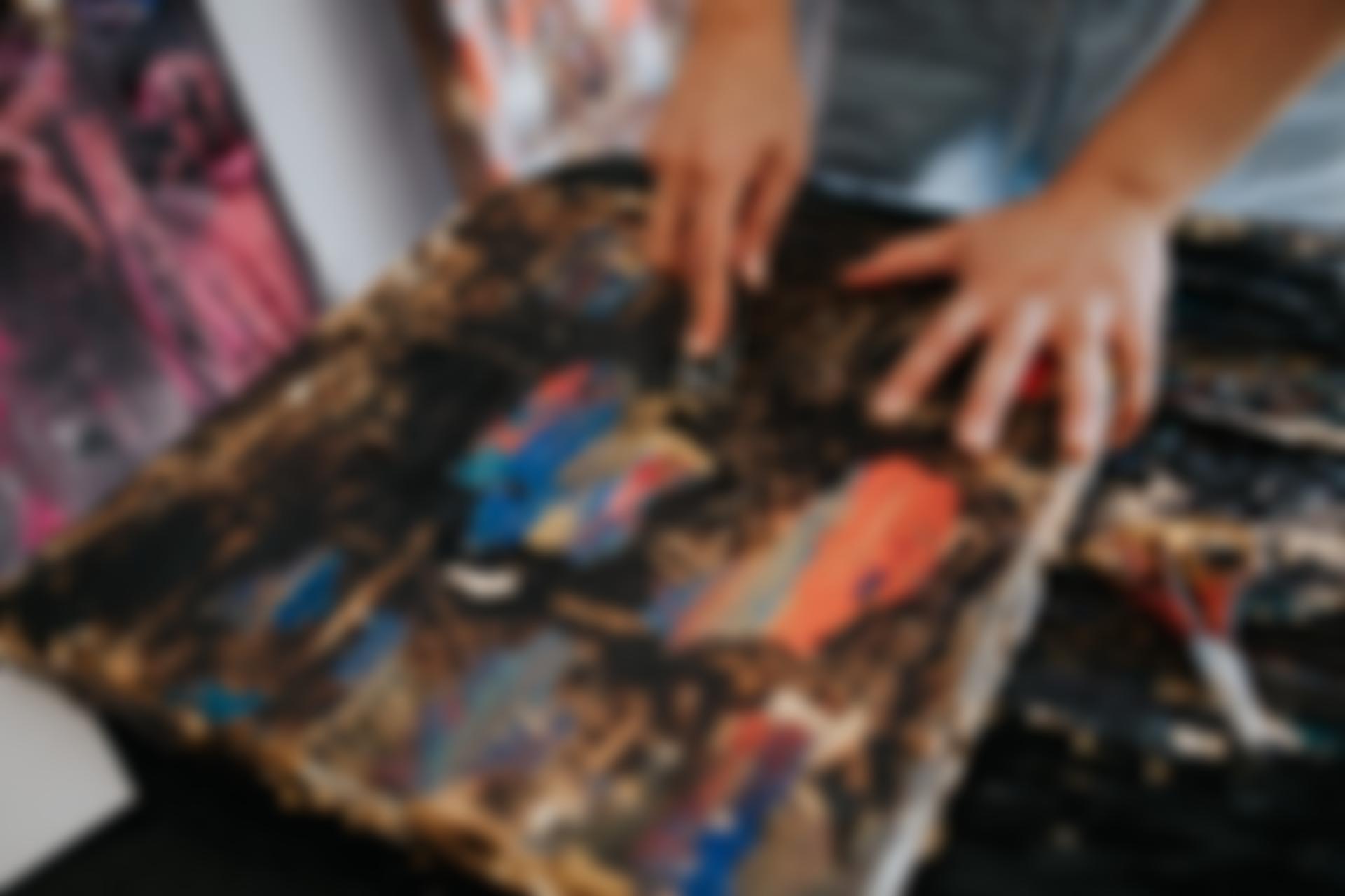
The title of The Lunar Line is taken from Indian mythology and the works are made on second-hand silk screens.
Silkscreens are commonly used to print images onto textiles, yet here I have used them as canvases for my paintings. I find these disused screens online and collect them from various homes around Sydney. They come into my studio with their own story and history— layers of imagery have been erased and exposed on the silkscreen mesh by artists before me. I go about layering and building my own surface.
The word Dalit means ‘of the soil’ or ‘the Earth’, and Dalit history and culture is as ancient as gold and some of these elements that I use.
My materials are sourced from local Indian grocery stores, as I live in a part of Sydney with a strong diasporic community. These materials are imported from India, hence, they are foreign, yet familiar. Pigments, cotton, gold, tar and other materials synonymous with religion, labour and value, animate the surface of the paintings. I feel that tar and gold especially are as ancient as Dalit culture— they are compressed and embedded in the earth, yet are resilient, like the Dalit body.
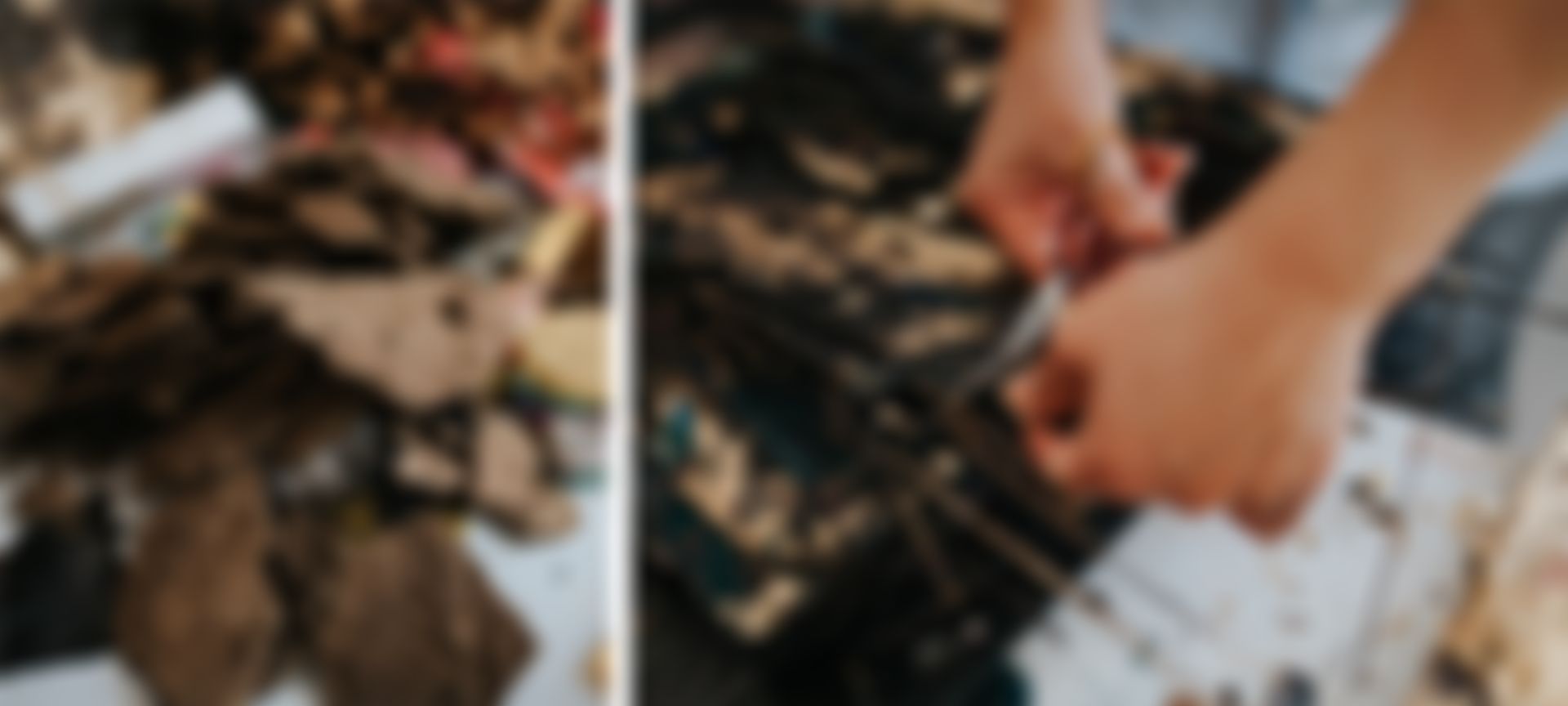
Through these works, I hope to imagine a contemporary Dalit art expression, one that is visible, celebrated and seen in cultural spaces where we can redefine the narrative we have been told.
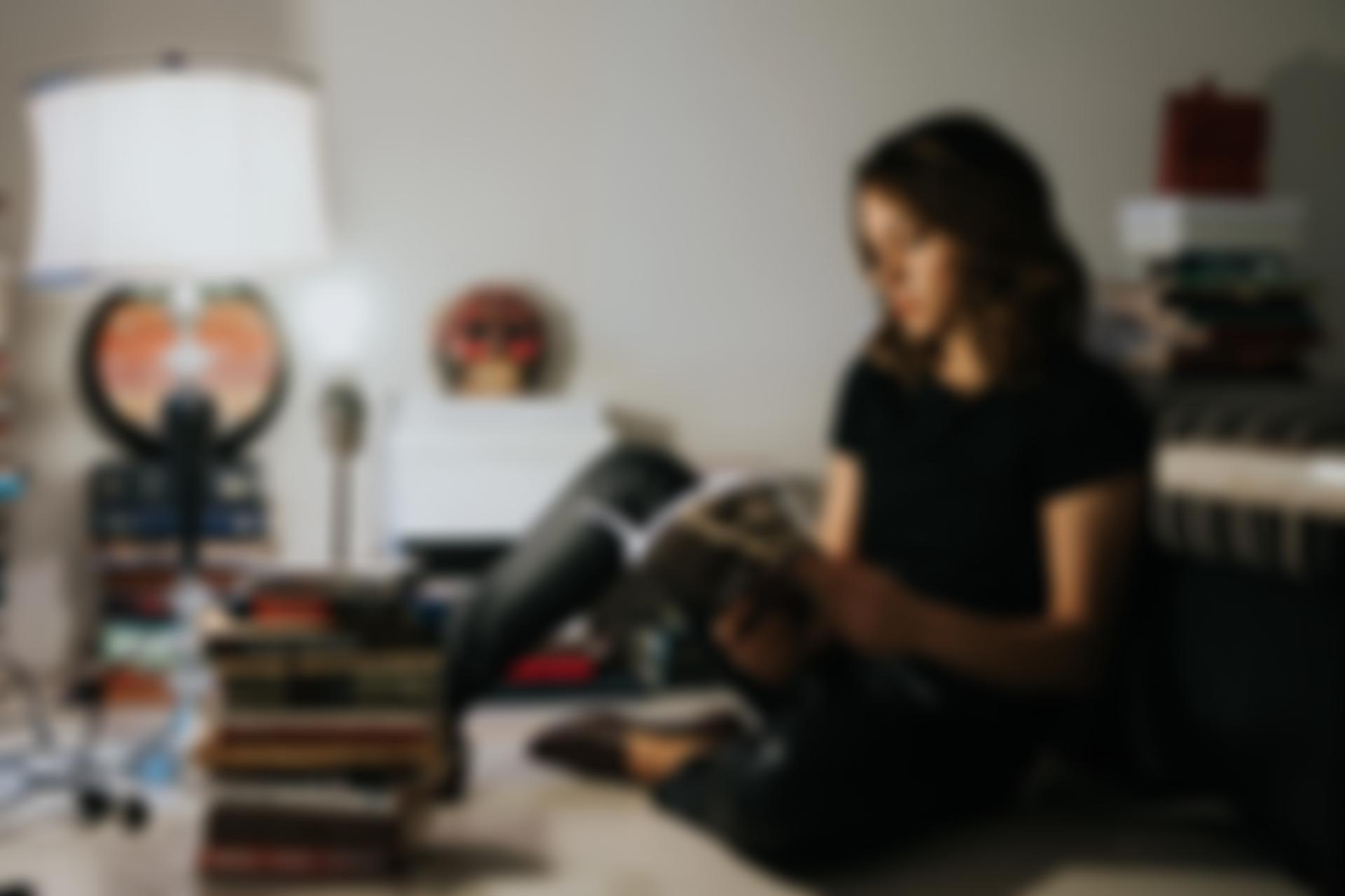
I am inspired by Dalit literature and have recently been enjoying the cathartic, sensual worlds of Baburao Bagul and the humour of Siddalingaiah. I am especially moved by the monumental writings of Dalit women, including Babytai Kamble and Urmila Pawar. I find their accounts to be unique, raw and powerful. I imagine their visceral words as surfaces and translate them into a material language.

What would our ancient material culture have looked like if it had survived, if it were valued and displayed?


Art is a container for the history we've inherited, and gives us the freedom to redefine, to see, and celebrate ourselves.
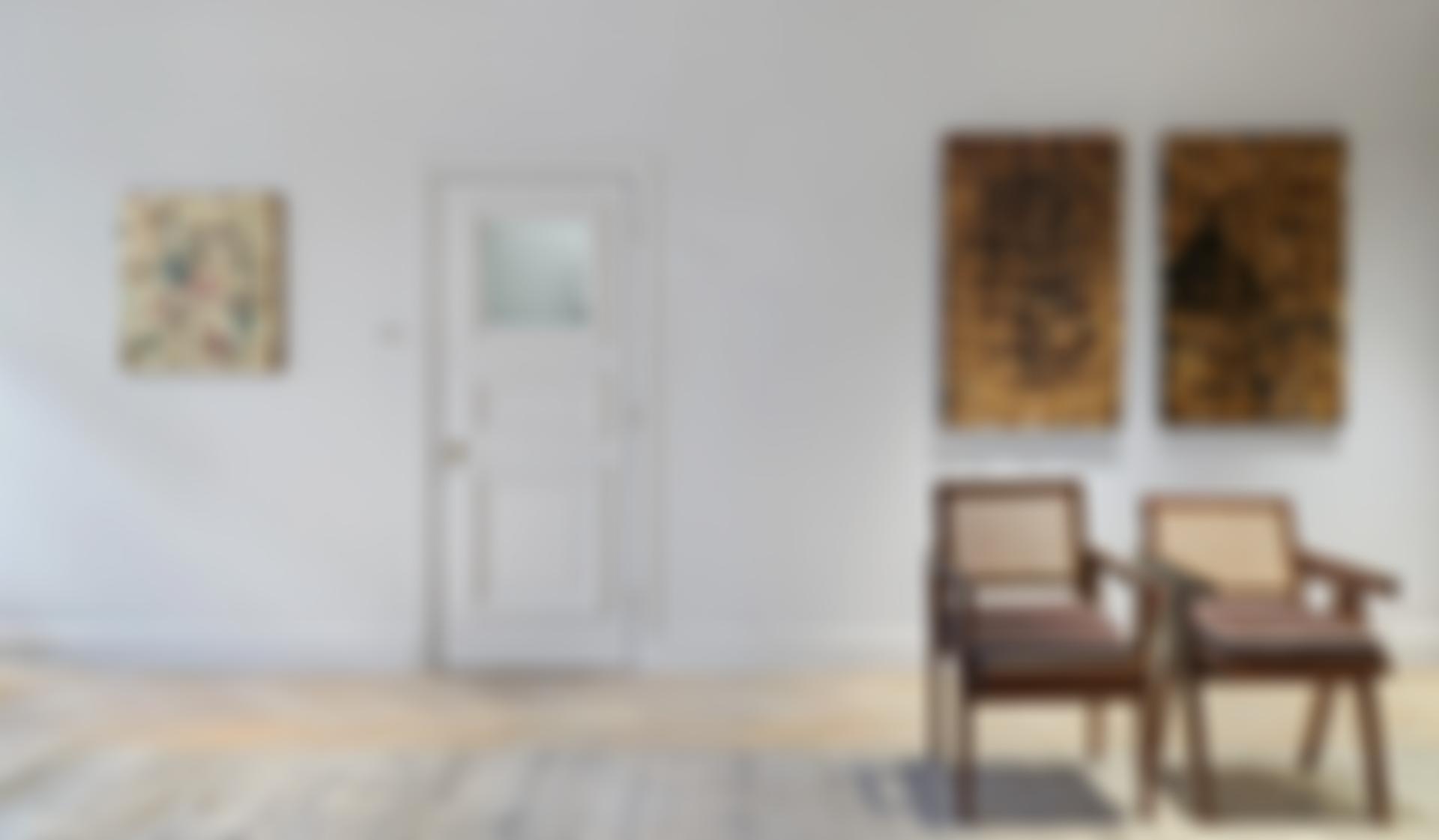
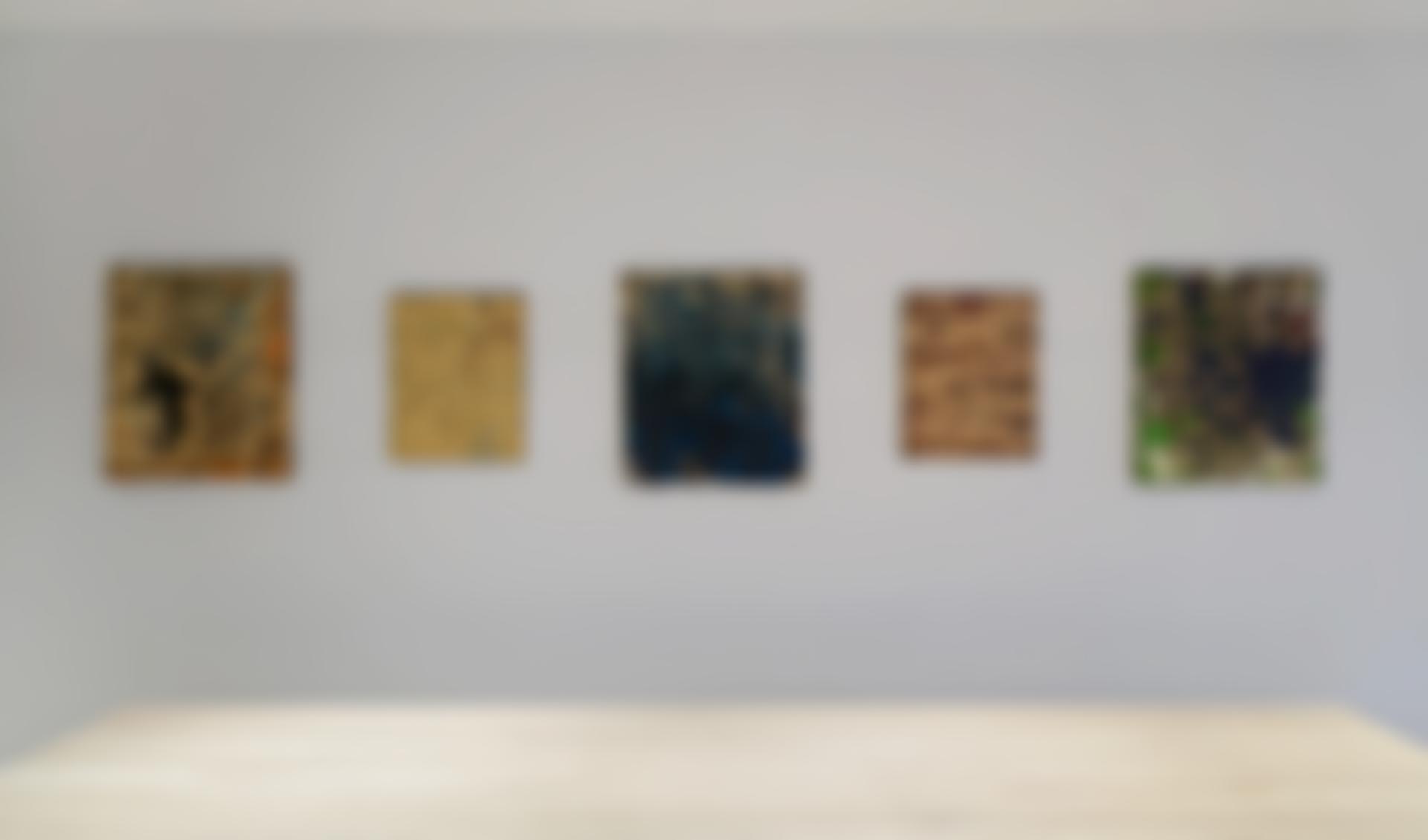
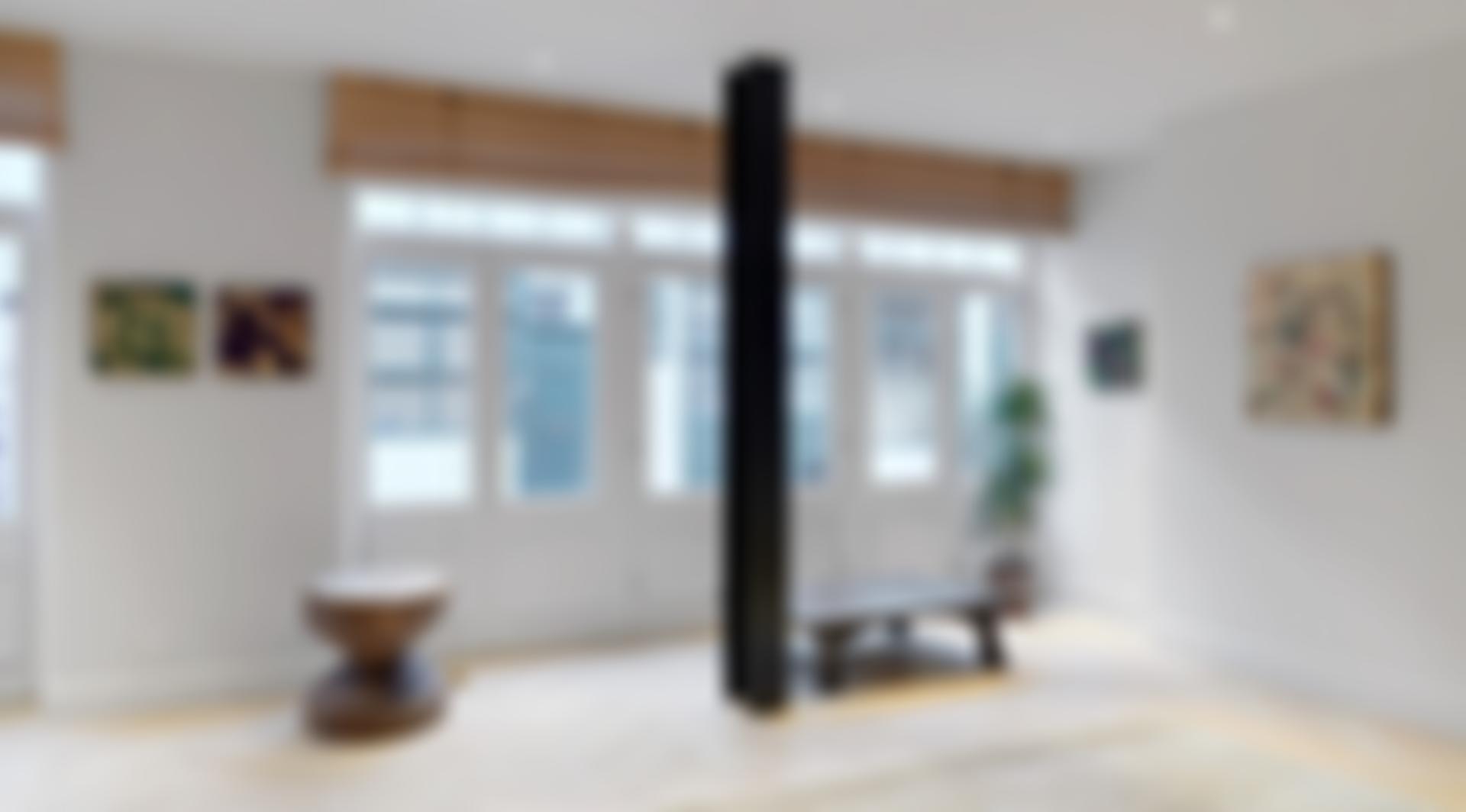

Biography
Kirtika Kain (b.1990, New Delhi. Lives and works in Sydney) examines how oppressive social hierarchies and power structures have been enforced upon and embodied by generations before her from the perspective of an outsider. Kain incorporates a myriad of humble materials that relate to themes of valuation, corporeality, ritual, and the manual labour of the lower classes including iron filings, gold, vermillion, and bitumen. Through diverse alchemical and experimental printmaking processes, Kain attempts to transform these everyday materials into aesthetic object of value; thus, re-defining and re-imagining a personal and collective narrative.
Kain received her BA in Psychology from Macquarie University in 2013; BFA from National Art School in 2016 and an MFA from National Art School in 2018.
Her work has been exhibited in solo and group shows and forms part of public collections, including Blacktown City Council, Blacktown; Lane Cove Council, Lane Cove; and National Art School Student Archive and Collection, Sydney.
